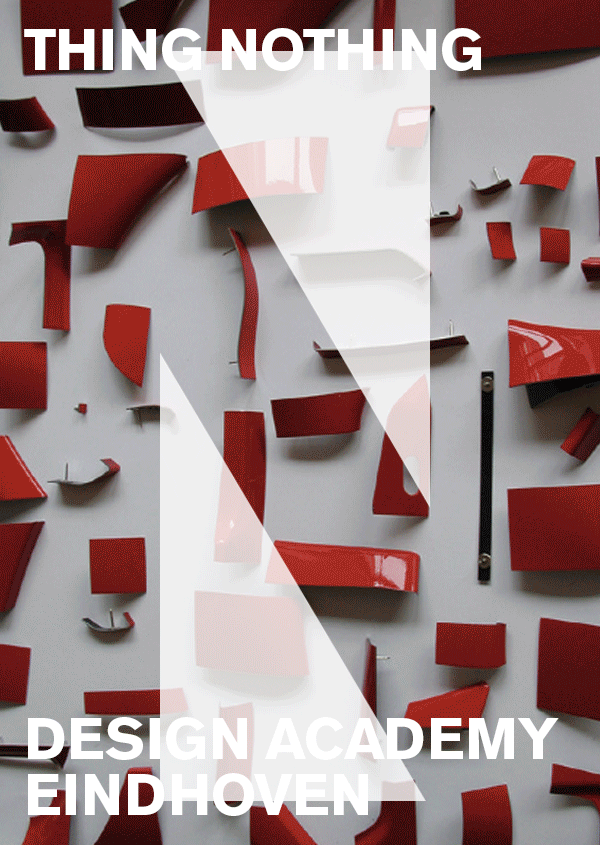by Gabrielle Kennedy
‘Thing Nothing’ - initiated by Design Academy Eindhoven’s creative director Thomas Widdershoven with the Van Abbemuseum - is a research into the meaning, value and future of things. ‘Thing Nothing’ addresses the relation between form and counter-form, between the real and the virtual, between technological possibilities and moral issues.

All ideas that can be applied to a cup - which can only ever begin as an empty vessel with the potential to contain something. A Taoist philosopher once said that to understand a cup you have to look at where the cup is not because the essence of the object lies not in the clay, but in the empty space in and around it.

Throughout this exhibition we explore how even an environment of emptiness or nothing can be teeming with meaning and value. The Ceramic Museum Princessehof, for example, has a Chinese Ru cup that is valued at 26 million euros. A small empty vessel, an artefact that no Dutch expert has the expertise to accurately value. It is only through the cup’s history, essence and potential that its meaning and ultimate value can be determined. To value a thing we must look beyond the material.

But meaning and value are never fixed concepts – they change over time depending on circumstances, politics and culture. That is why the image of Chinese artist and political activist Ai Weiwei dropping another empty vessel to the floor - a Han Dynasty vase - is so compelling. He doesn’t blink. The vase is some 2000 years old and undoubtedly valuable. His point is that change can only be achieved by destruction and one must sometimes opt for ‘nothing’ over ‘thing’ to make room for the new.
 Renowned Dutch designer and Design Academy Eindhoven teacher Aldo Bakker’s oeuvre is full of empty vessels. Aldo embraces a very personal yet formal language with his objects that are both original, yet rife with references to the history of art and design. His ‘things’ are not just hollow shapes and spaces, but function metaphorically as symbols on to which meaning can be projected.
Renowned Dutch designer and Design Academy Eindhoven teacher Aldo Bakker’s oeuvre is full of empty vessels. Aldo embraces a very personal yet formal language with his objects that are both original, yet rife with references to the history of art and design. His ‘things’ are not just hollow shapes and spaces, but function metaphorically as symbols on to which meaning can be projected.
The academy has always encouraged this type of cerebral approach. We urge students to look beyond the material properties of things, to search for a presence in the space in and around an object. Even while embracing technology and social change, we strive for a kind of material poetry, where thing and nothing are linked.
And given the explosion of technology and the evolving prominence of virtual space, how to create this tension between the thing and the nothing is changing.Today designers need to be able to take their skills and translate them into the realm of the unseen, the unspoken, and the unmade.

Recent graduate Olivier van Herpt, for example, designed a 3d clay printer because he found the plastic used in normal 3d printers to be too slick and sterile. As the programmer, technician and craftsman, Olivier’s work is both digital and analogue and connects with the latest techniques as well as the history of ceramic culture.
In ‘Gravity Tool II’ Jólan van der Wiel explores the potential of the cooperation between technology and natural phenomena. Like Olivier, he developed his own tools and materials to create a series of objects. For the stool in ‘Thing Nothing’, Jólan disrupts the force of gravity - which has a massive influence on the creation of most shapes - by injecting it with magnetic fields. The natural pull is thus disturbed, and the result is a set of uniquely shaped stools.
See catalogue and more info, on our Thing Nothing page.